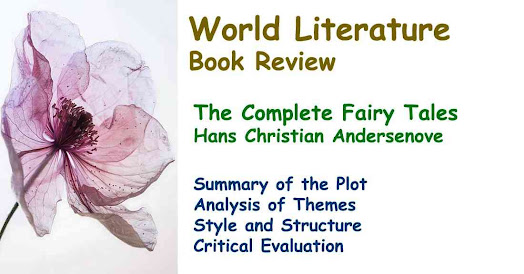%20by%20Sophocles.jpg) |
| Book Review 28 - Oedipus Rex (The Theban Plays, #1) by Sophocles |
Title: Oedipus Rex (The
Theban Plays, #1). Author: Sophocles. Publication Details:
Originally performed c. 429 BCE, reprinted editions available from Penguin
Classics, Dover Thrift Editions, and others. Genre: Tragedy.
Introduction
Oedipus
Rex, a classical Greek tragedy written by Sophocles, stands as a timeless
exploration of fate, human suffering, and self-knowledge. As the first play in
Sophocles' Theban trilogy, it establishes the story of King Oedipus, whose
quest to rid Thebes of a deadly plague leads him to confront dark truths about
his own life. The play has maintained its cultural significance for over two
millennia due to its universal themes and psychological depth. It is often
praised as the pinnacle of tragic form in Western literature.
Summary of the Plot
The
plot follows Oedipus, King of Thebes, as he attempts to rescue his city from a
plague by uncovering the cause of divine anger. The Delphic Oracle declares
that the plague will cease only when the murderer of the former King Laius is
found and punished. Oedipus vows to solve the mystery, unaware that he is, in
fact, Laius' killer and has unknowingly married his own mother, Queen Jocasta.
As he investigates, he pieces together his origins and the fulfillment of a
chilling prophecy: that he would kill his father and marry his mother. His
search for truth leads him to tragic self-awareness, blindness and exile,
fulfilling the prophecy and his tragic fate.
Analysis of Themes
Central
to Oedipus Rex are themes of fate versus free will, the pursuit of knowledge
and the tragic flaws inherent in human nature. Oedipus is portrayed as a victim
of an inescapable fate set by the gods, despite his efforts to avoid it.
Sophocles questions the extent of human agency, highlighting the limits of free
will in the face of divine forces. Additionally, the play probes the dangers of
seeking knowledge, as Oedipus' quest for truth leads him to unbearable
revelations. His hubris— excessive pride and self-confidence— is a tragic flaw
that blinds him to warnings and ultimately to his own past.
Style
and Structure
Narrative Style
The
play’s narrative style is structured as a tightly woven sequence of dramatic
dialogue and choral odes, unfolding in real-time within a single location,
which amplifies the intensity of the tragedy. The dialogue-driven format allows
the audience to witness characters’ emotional shifts and moral dilemmas in the
moment, reinforcing the immediacy of Oedipus’ fate.
Language and Tone
Sophocles’
language is rich with imagery and metaphor, befitting the tragic genre. The
tone is solemn and foreboding, with the Chorus enhancing the play's mood
through their lyrical odes. The language reflects the weight of the prophecy
and the inexorability of fate, creating an atmosphere where each revelation
brings both horror and pity.
Critical
Evaluation
Strengths
The
play’s greatest strength is its psychological complexity and exploration of
human vulnerability. Sophocles’ insight into human nature allows him to depict
Oedipus as both powerful and tragically flawed, making his downfall relatable
and poignant. The play’s structure, with its buildup of tension and suspense,
also contributes to its lasting impact.
Weaknesses
Some
readers may find the play’s strict adherence to fate undermines the characters’
agency, reducing them to puppets of the gods. Additionally, the lack of modern
language may pose a challenge for contemporary readers, as translations can
vary in readability.
Conclusion
Oedipus
Rex is a powerful tragedy that challenges readers to confront difficult
questions about fate, free will, and the cost of self-discovery. Sophocles’
treatment of Oedipus’ tragic journey resonates as much today as it did in ancient
Greece, providing a profound exploration of human frailty and resilience. The
play’s emphasis on moral complexity and fate has secured its status as a
masterpiece, reminding audiences of the enduring power of classical tragedy.
References
Knox,
B. (1998). Oedipus at Thebes: Sophocles' Tragic Hero and His Time. Yale
University Press.
Goldhill,
S. (2012). Sophocles and the Language of Tragedy. Oxford University Press.
Dodds, E.R. (1966). On Misunderstanding the Oedipus Rex. Harvard Studies in Classical Philology, 50, 1–35.
Frequently Asked Questions (FAQs)
What
is the central theme explored in Oedipus Rex?
The
main theme is the struggle between fate and free will, as Oedipus’ attempts to
avoid prophecy only lead him closer to fulfilling it.
Why
does Oedipus blind himself?
Oedipus
blinds himself as an act of penance and self-punishment after discovering the
truth about his parentage and his actions, which fulfill the tragic prophecy.
How
does the concept of hubris apply to Oedipus?
Oedipus’
hubris, or excessive pride, leads him to disregard warnings and pursue
knowledge, which ultimately results in his tragic downfall.
What
role does the Chorus play in the play?
The
Chorus provides commentary, reflects on the action and represents the voice of
Theban society, offering moral and philosophical insights.
Is
Oedipus Rex still relevant today?
Yes, the play’s exploration of human nature, morality and fate has timeless relevance, addressing universal questions that resonate across generations.






%20by%20Astrid%20Lindgren.jpg)


